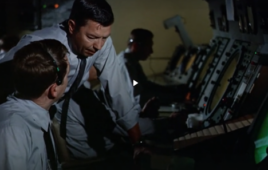Citing technology anxieties as well as subscriber bill concerns, Bernie Sanders and some of his Senate colleagues threw a couple punches at the potential Charter/Time Warner Cable merger on Thursday.
The group says possible pitfalls might include drags on new technological rollouts and network upgrades, and they also reference the ever-popular Higher Prices Bogeyman. The deal “would effectively create a nationwide broadband duopoly, leaving New Charter and Comcast in charge of the essential wires that connect most Americans to how we commonly communicate and conduct commerce in the 21st Century,” according to a letter sent to to Attorney General Loretta Lynch and FCC Chairman Tom Wheeler. Joining Sanders in signing it were Sens. Ed Markey, Al Franken, Ron Wyden and Elizabeth Warren.
The document goes on to say that Comcast and New Charter would control nearly two-thirds of the nation’s high-speed data homes, and raise prices in the United States, which reportedly ranks 31st out of 33 countries in cost for fixed standalone broadband plans, according to an FCC document.
New Charter’s debt load also could mean the company might slow investments to improve its own network despite promises to grow, the senators say: “While New Charter has committed to building out its new network, including in rural areas … we question whether the newly formed company will have the resources necessary to achieve this critical goal.”
They also fret that the company might close off access to online video distribution competitors and leave new ones with limited ways to enter subscribers’ homes.
Last May when Charter unveiled its plans to merge with TWC and acquire Bright House Networks, Charter President/CEO Tom Rutledge tried to head off technology concerns in a press release by saying: “Representatives of each of these companies have invented some of the most revolutionary communications products ever created.”
He names the likes of video-on-demand, VOIP, remote storage DVR, cable TV through an app, downloadable security and the first backward-compatible, cloud-based user interface as examples.
“With our larger reach, we will be able to accelerate the deployment of faster Internet speeds, state-of-the-art video experiences, and fully featured voice products, at highly competitive prices,” Rutledge adds in that May statement. “In addition, we will drive greater competition through further deployment of new competitive facilities-based WiFi networks in public places, and the expansion of the facilities footprint of optical networks to serve the large, small and medium sized business services marketplace.”
He also points to his belief that the bigger reach will allow the company to accelerate deployment of faster Internet speeds, state-of-the-art video and fully featured voice products, at reasonable market prices.
“In addition, we will drive greater competition through further deployment of new competitive facilities-based WiFi networks in public places, and the expansion of the facilities footprint of optical networks to serve the large, small and medium sized business services marketplace,” he continues. “Put simply, the scale of New Charter, along with the combined talents we can bring to bear, position us to deliver a communications future that will unleash the full power of the two-way, interactive cable network.”
Filed Under: Cables + cable management, Industry regulations




